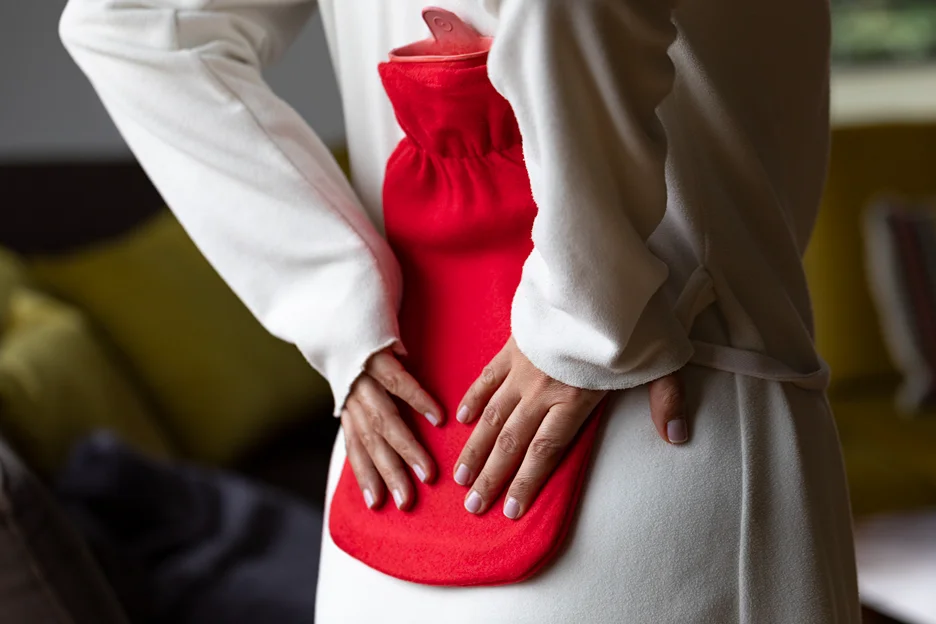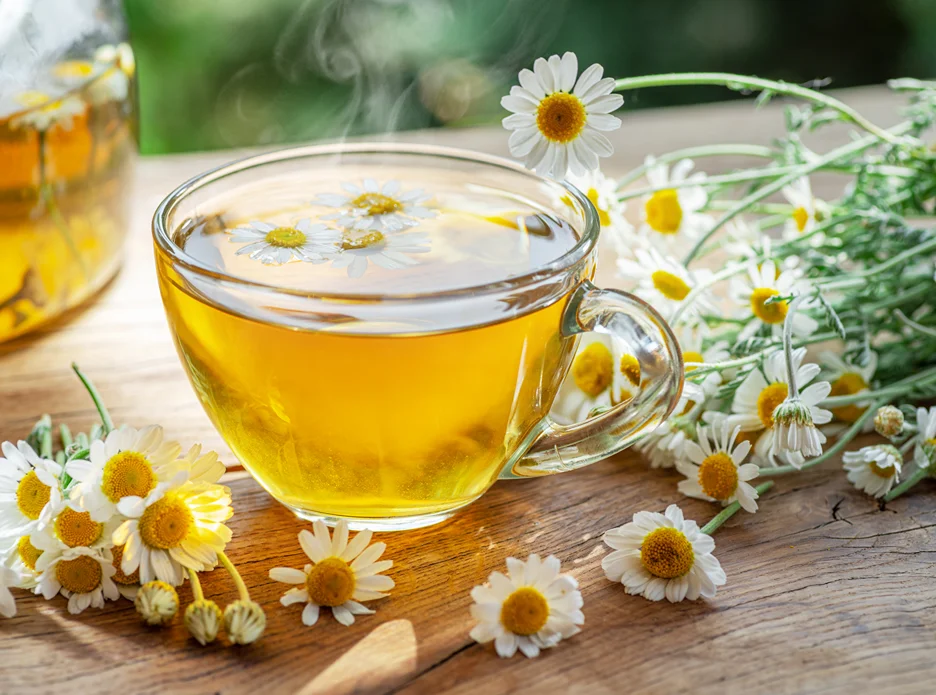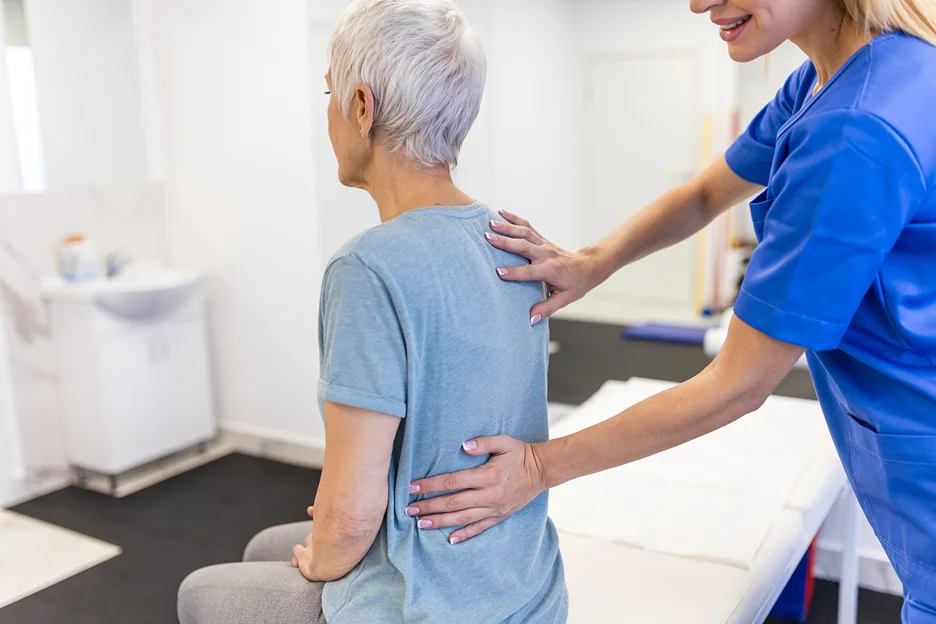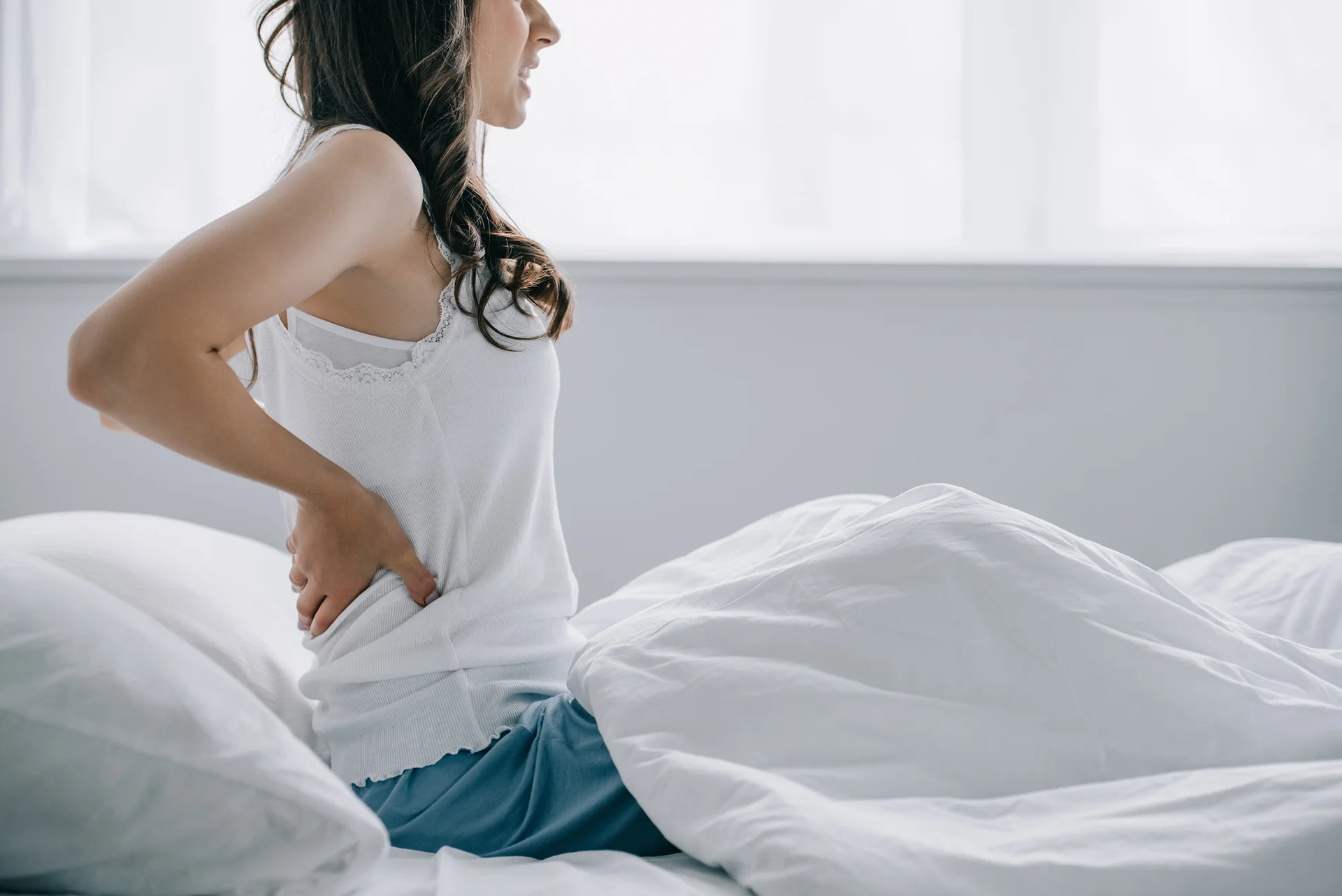Discover home remedies backed by solid science to safely relieve your discomfort
Think you’ve tried everything for your back pain? What if you could end stiffness, aches, and spasms fast using household items? What if science proved certain food-based remedies can cure back pain?
At Kaly, we took the time to research and reveal proven home remedies for back pain backed by experts.
Pain persisting? Get treated by a back expert via our platform.
What’s the Fastest Way to Relieve Back Pain at Home?

The fastest way to relieve back pain at home is to apply hot or cold compresses to the affected area, take over-the-counter anti-inflammatory medication, do gentle stretches, improve posture, use topical relief creams, and try relaxation techniques like deep breathing.
When back pain suddenly strikes, the discomfort can make even small movements agonizing. Finding fast relief is a priority.
According to the experience of Kaly specialists, there are several accessible home remedies you can try right away to help ease acute back pain episodes:
Apply Hot or Cold Therapy
Using heat helps relax stiff, tense muscles and gives temporary pain relief. Try placing a heating pad, hot water bottle, wheat bag, or heat wrap on the sore areas for 10-20 minutes. The warmth increases blood flow to the injured tissues.
A 2014 clinical trial study published in the National Center for Biotechnology Information (NCBI) found that applying heat therapy like heating pads or hot water bottles was effective in reducing pain and disability in patients with acute low back pain.
The study compared the effects of heat therapy, cold therapy, and an oral placebo pill in 87 patients.
Ice packs can also reduce sudden back pain by decreasing inflammation around irritated nerves and joints. Wrap ice or a frozen gel pack in a towel and apply to painful sites for 10-15 minutes to dull the discomfort.
Alternate between heat and ice therapy to determine which works best for your particular pain. The combination can be especially effective.
Take Over-the-Counter Oral Medication
OTC pills like ibuprofen, naproxen, or aspirin act as anti-inflammatories to reduce swelling around joints and nerves. Acetaminophen blocks pain signals in the brain but doesn’t impact inflammation.
A 2020 comprehensive review published in NCBI looked at over 35 studies on various over-the-counter treatments for chronic low back pain.
The review found that non-steroidal anti-inflammatory drugs (NSAIDs) like ibuprofen provide a small but statistically significant improvement in pain relief compared to placebo.
Follow all dosage instructions carefully and do not exceed daily limits when taking OTC meds for back pain relief. While fast-acting, they can have side effects with prolonged use.
Try Gentle Stretches and Exercises
This 2016 systematic review examined the effects of different types of exercise on chronic low back pain. The review found that exercises that strengthen core muscles can help support the lower back.
- Stretching exercises can increase flexibility and range of motion to assist with movement.
- Aerobic exercise increases blood flow to soft tissues to aid healing.
Carefully stretching the back, hips, core, and legs gently lengthens muscles to relieve tension, spasms, and tightness. Popular options include:
- Cat-cow pose
- Knee-to-chest pulls
- Pelvic tilts
- Spinal twists like seated twist
Go slowly, focusing on alignment and breathing. Stop if you feel any sharp pain. Gentle movement increases mobility for fast relief.
Improve Your Posture Habits
A 2020 article from Harvard Health states that practicing good posture techniques like pulling shoulders back while keeping the head level can instantly relieve pressure and strain on the back. Imagery like picturing a string pulling the head upward can help improve posture.
Sitting or standing taller realigns the spine to reduce pressure on strained areas. Be mindful not to hunch over devices or slouch.
Use lower back support like a cushion or rolled-up towel when sitting for a long time. Keeping the natural curve of the spine relieves discomfort.
Practice proper posture habits like pulling shoulders back while keeping head level and abdomen engaged. This instantly eases pressure.
What are Some Home Remedies for Back Pain that Involve Drinking Something?

Drinking anti-inflammatory teas like chamomile, green, or ginger, antioxidant juices like tart cherry, and smoothies with spinach and kale can help relieve back pain through their natural compounds that reduce swelling and relax muscles. Be sure to stay hydrated as well.
Anti-Inflammatory Teas
Specific herbal teas contain compounds that reduce swelling and relax tense muscles when consumed daily. Kaly specialists recommend steeping these healing herbal remedies and drinking 1-2 cups per day:
- Chamomile tea contains apigenin, an anti-inflammatory agent that can decrease swelling and relax cramped muscles.
A 2010 study found that chamomile tea contains apigenin, which inhibits inflammation and reduces swelling. It acts through suppressing NF-κB activation.
- Green tea is rich in polyphenols that lessen inflammation. The amino acid theanine also relaxes muscles.
A 2017 review summarized evidence showing green tea polyphenols like EGCG significantly reduce inflammatory markers like IL-6, TNF-α, and serum amyloid A. They act by inhibiting inflammatory pathways.
- Ginger tea made from fresh ginger contains gingerol, an anti-inflammatory that also helps reduce muscle spasms.
A 2010 study demonstrated that 2 grams per day of ginger powder significantly reduced exercise-induced muscle pain in adults. Ginger contains anti-inflammatory compounds like gingerols.
Healing Juice
Tart cherry juice’s anthocyanins reduce inflammation and muscle soreness – drink 1 cup a day.
A 2019 study found tart Montmorency cherry juice lowered inflammatory markers CRP, MDA, and OxLDL over 12 weeks in older adults. Tart cherries contain anti-inflammatory anthocyanins.
Try Making Soothing Smoothies with These Ingredients
Blending anti-inflammatory foods into smoothies makes them easy to incorporate into your routine:
- Spinach, pineapple, turmeric, ginger – anti-inflammatory and pain-reducing.
- Kale, avocado, and chia seeds – healthy fats that fight inflammation.
Drink Your Water
Getting adequate fluid intake avoids dehydration which can worsen back pain. Drink at least eight 8-oz glasses of water daily, along with herbal tea, juice, or coconut water.
A study found that mild dehydration predicted increased pain sensitivity and baseline pain levels.
Overall, sipping these nourishing beverages can complement other home remedies and provide inflammation-fighting nutrients for natural back pain relief, as per Kaly specialists’ advice.
What Can I Do at Home to Treat a Herniated Disc?

Get rest but avoid prolonged bed rest, use hot therapy, and try OTC anti-inflammatories short-term, while consulting a doctor for severe symptoms.
Rest is Key, But Avoid Too Much of the Bed Kind
Our experts advise getting plenty of rest to allow your body to start healing from the herniated disc injury. We recommend avoiding activities that aggravate the area like heavy lifting, frequent bending and twisting motions.
However, too much bed rest can cause surrounding muscles to weaken over time. Find a balance between rest and gentle activity.
A 2017 study published in PMC found that with medical treatment and rest, lumbar disc hernias could recover clinically and show spontaneous regression over time.
Opt For Heat Therapy
Based on what we’ve seen work best, consider alternating hot and cold therapy for relief. Applying heating pads helps relax tight back muscles while icing reduces inflammation around the compressed nerve. Swap between the two for optimal results.
This 2023 PMC study reviewed evidence on using heat therapy for acute and chronic low back pain. It found moderate evidence that continuous low-level heat wrap therapy reduces pain and disability in acute low back pain.
Over-the-Counter Medication Could Help
Our specialists suggest exploring over-the-counter anti-inflammatory pills like ibuprofen or naproxen to temporarily reduce discomfort and swelling around the disc when taken properly. Just keep in mind that prolonged use can come with side effects.
The 2020 PMC study notes that rest, pain medication, and physical therapy are first-line treatments for herniated discs, which aligns with the passage’s recommendations.
While severe herniated discs require medical treatment, these natural home remedies can support healing when done cautiously under a doctor’s supervision.
What are Some Homemade Remedies for Back Pain During Pregnancy?
For back pain during pregnancy, apply heating pads to temporarily relieve muscle spasms and swelling and wear an adjustable maternity support belt to lift the belly and improve posture and balance.
Some home remedies for back pain that we at Kaly recommend and are backed by science include heating pads and an adjustable maternity support belt.
- Apply hot packs. Heating pads or blankets relieve muscle spasms and swelling for quick, temporary relief from pregnancy-related back pain.
A 2013 Cochrane review concluded that evidence is insufficient to evaluate the effects of cold therapy for low back pain, but heating pads significantly reduced acute low back pain in one study of 90 people.
- Use a maternity support belt. Wearing a flexible, adjustable belt under the belly lifts the weight to decrease back strain. Consult your OBGYN before using.
A 2019 systematic review found belts may provide a “proprioceptive effect” to improve posture and balance.
How Can I Relieve Back Pain at Home Before and After Delivery?
To relieve back pain at home before and after delivery, try warm baths, gentle stretches, supportive devices, therapeutic massages, over-the-counter or prescribed medications only after consulting your doctor, and avoid any risky activities that could worsen pain or cause harm.
Take Warm Baths
Soaking in a warm tub of water can aid in soothing aching muscles from delivery and nursing. Consider adding Epsom salts or a few drops of lavender essential oil to enhance the relaxing effects. Avoid extremely hot water.
A 2018 randomized clinical trial on 80 primigravida women in Iran found that applying local heat through warm compresses significantly reduced labor pain and had no adverse effects on the fetus.
The researchers concluded that thermotherapy is a safe, non-pharmacological approach to stimulate uterine contractions and shorten labor duration.
Perform Gentle Stretches and Exercises
Low-impact stretches like pelvic tilts, cat/cow pose, and knee-to-chest can alleviate tightness and strengthen the back. Walking and swimming are gentle once approved by your provider. Move slowly and stop if it hurts.
Use Supportive Devices
Devices like birth balls, belly wraps, and braces take pressure off the spine. Placing a pillow between your knees when side-lying and using good posture prevents added strain.
Get Therapeutic Massages
Massage therapy increases relaxation and blood flow to tight muscles. Target the shoulders, lower back, and hips. Acupressure also relieves discomfort. Communicate your needs to the therapist.
Rely on Over-the-Counter Medication
Anti-inflammatories like ibuprofen and acetaminophen may provide relief when taken as directed after delivery. Muscle relaxants like Diazepam and Methocarbamol may also be prescribed postpartum. Consult your doctor for dosage recommendations to avoid risks.
What are Some Home Remedies for Back Pain in Old Age?

For seniors, take OTC meds carefully, apply menthol rubs, and use canes, walkers, braces, or shoe inserts to improve posture, balance, and mobility to manage back pain and avoid strain or falls.
As we age, backs naturally weaken from muscle loss and joint degeneration, often leading to chronic pain. Kaly specialists often advise seniors to safely manage their back discomfort with the following tips.
- Take OTC medication judiciously. Tylenol or NSAIDs relieve pain but should be taken carefully at lower dosages to avoid side effects.
- Use menthol rubs. Applying menthol creams creates a cooling, tingly sensation that distracts from back pain. Massage gently into affected areas.
In one study comparing menthol gel to ice for delayed onset muscle soreness, the menthol provided significantly greater pain relief and allowed greater muscle forces to be produced.
- Try massage therapy. Regular therapeutic massage loosens tense muscles and increases circulation, offering seniors both pain relief and relaxation, as per this NCBI study.
- Use assistive devices. Canes, walkers, back braces, or shoe inserts improve posture and balance, preventing pain-causing falls and strain.
Tried home remedies with no results? Discover specialists on Kaly.
